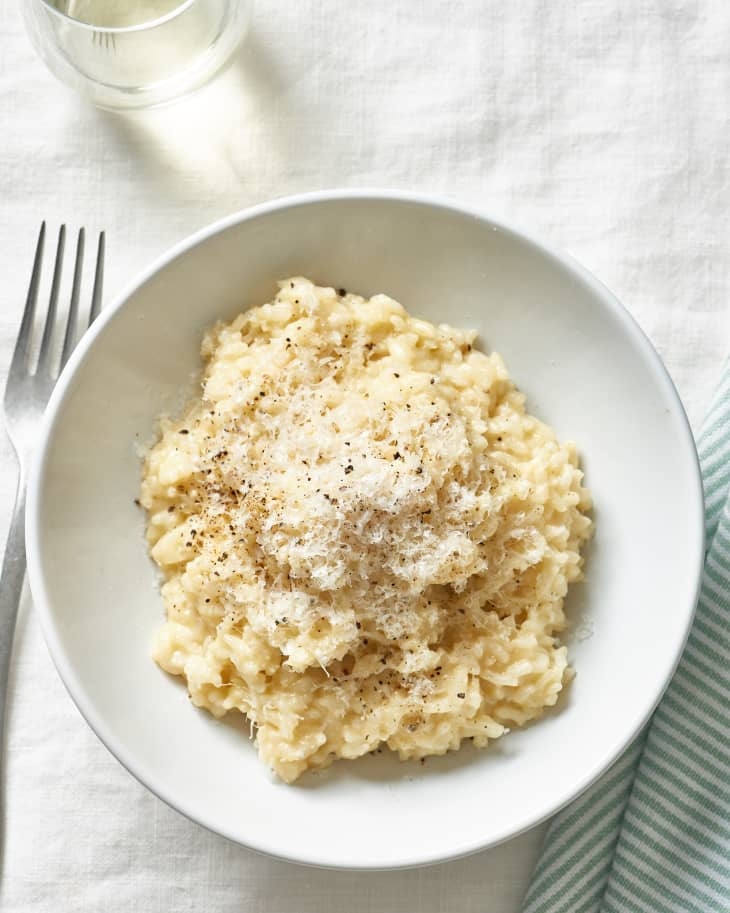The One Small Step that Makes Any Risotto Better
I dislike dirtying an extra pot as much as the next cook, but when it comes to risotto at home I’ll make a huge exception for a warming the broth. Risotto is made by cooking risotto-style rices in butter with some aromatics and white wine and then slowly adding broth to the rice. You stir gently, adding more broth as the previous batch is absorbed into the rice, until you have a pan of creamy broth surrounding tender rice.
This dish has humble origins in the kitchens of Italian home cooks, where it’s hard to imagine someone would have fussed with warming the broth. But imagined anecdotes aside, here’s why I believe that yes, you really should warm the broth when cooking risotto.
Warm Broth = Better Risotto
Risotto can be a quick weeknight dinner if you keep the ingredients minimal and cook it in a wide skillet, so it may seem like a trivial detail to warm the broth since it will be going into an already hot pan in small spurts. One might think that a ladle-full of cold broth couldn’t possibly drop the temperature of a whole pan of risotto very quickly, and you might be right.
But I think of it this way: A cold splash of broth drops the temperature of the few grains of rice it does come in contact with, and that rice cooks more slowly. Meanwhile, the remaining rice in the pan is cooking just as fast as it was before the broth was added. Eventually, you end up with a pan of unevenly cooked rice grains in a soupy sauce.
Warming the broth to a simmer standardizes the cooking times and temperatures. Sometimes I’m reaching for room-temperature cartons of broth from the pantry and other nights I’m pulling frozen broth to thaw before dinner. Heating the broth guarantees that either broth will be close to the same temperature when I start cooking the risotto.
With the rice and broth close to the same temperature when the broth is added, I can expect this pan of risotto to cook at the same rate as the batch from last week— even if I get interrupted by a 3-year-old trying to sneak some Parmesan and forget to stir for a few minutes.
Heating the broth means that every batch of risotto I cook is going to produce the same creamy, dreamy texture, and that’s important when a cozy comforting meal needs to hit the table (and our stomachs) quickly.
In a Pinch? Microwave It!
Let’s say you’re making risotto as a side dish to dinner and you need to warm the broth but there is no stovetop space. Or you’ve already got the shallots sweating and you forgot to warm the broth first. Heat the broth in a spouted measuring cup or pitcher until warm in the microwave. You may need to heat it again during the cooking processes, but you’ll still have speedy risotto without extra stovetop space.
Get our basic recipe: How To Make Great Risotto at Home
We’ve been having this
discussion of whether
With that said, we know many home cooks who make it with room-temperature broth with great success. There’s wisdom in the risotto pot, and experience making this dish is where you’ll gain it.
So to our readers who are old pros, how do you make your risotto? Do you warm the broth? Have a favorite rice? Share the way you make it the comments and spread the risotto wisdom!
